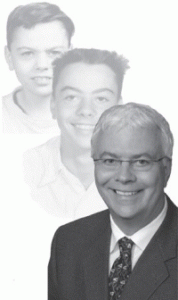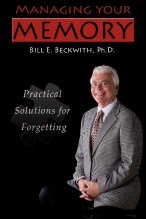Myths About Brain and Memory
Posted on October 20th, 2014 in Uncategorized
Here are some of my favorite myths regarding the brain and how memory works.
- – Listening to Mozart or classical music improves intelligence. This belief is based on the “Mozart Effect” from a 1993 study suggesting that listening to Mozart may improve intelligence. However, subsequent research demonstrated that the effect was restricted to spatial intelligence and is temporary. The effect is not restricted to classical music and is probably has to do with improved mood and enjoyment.
- – The right brain is creative whereas the left brain is logical. This long-standing belief stems from the fact that the brain has two hemispheres that have different functions. The right brain controls left sided motor/sensory function whereas the left brain controls right side motor/sensory function. Furthermore, there is a long standing debate about localized versus distributed brain functions based on injuries (e.g., a left brain stroke produces language deficits) and the effects of “split brain” surgery that cuts the corpus collosum (the communication channel between the hemispheres). Clearly the intact brain uses both hemispheres in a collaborative manner. Creativity involves integrity of both hemispheres.
- – You only use 10% of your brain capacity. This makes for interesting science fiction such as the movie Lucy but we use all parts of our brain even for simple tasks. This belief probably is based on trying to motivate students to give more effort in school.
- – Adults do not make new brain cells. This myth arises from many early studies and theories that we are fixed in abilities either in childhood or early adulthood. The definitive study was completed in 1998 and demonstrated that adult’s brains are capable of “neural plasticity.” You can teach an old dog new tricks. As long as we retain awareness our brains are programed to elaborate circuits based on experience and practice.
- – Memories are accurate and we store all details of experience. This myth arose from early neurosurgery findings that stimulating specific places in the brain produced what appeared to be recollections of specific events and facts as well as our attempts to use computers to model how the brain works. Indeed, the accuracy of these memories is very unreliable when facts were checked. For most of us memory is full of errors, gaps, approximations, and susceptible to suggestion. There are very few who have “photographic memory.” Memory is a reconstructive process based on storing the “”gist” of events and filling in gaps.
- – Playing games, doing mentally challenging tasks, and mental exercise improves short-term memory. Doing challenging or stimulating activities improves brain function due to increasing alertness or arousal and taking advantage of neuroplasticity also known as learning to learn. We build knowledge, expertise, and skills by practice and repetition. However, this is long-term memory and problem solving. Short-term memory does not respond to practice but rather is like the “save” button on a computer. Short-term memory relies on planning strategies to remember. It takes effort and time. We remember best what we spend the time to truly understand. Short-term memory works by the One Minute Rule – anything given less than one minute of thought will fade from memory.
Tags:




